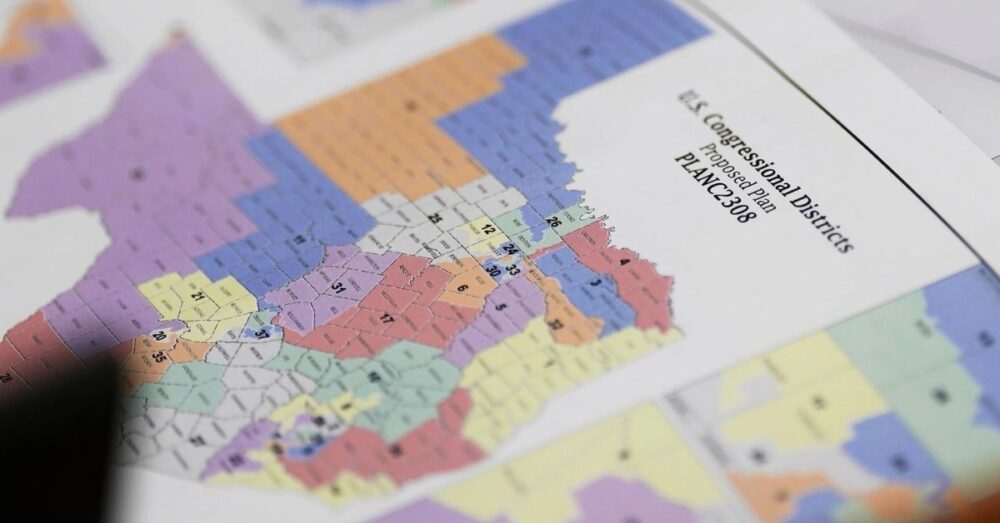(Texas Scorecard) – EL PASO—Court proceedings continued Saturday, as the fourth day of Texas’ 2025 federal redistricting trial saw Plaintiffs finally present a witness who provided evidence directly addressing the heart of their racial gerrymandering claims.
The latest congressional map creates five new GOP-opportunity districts. Plaintiffs suing over the map include the League of United Latin American Citizens (LULAC), the National Association for the Advancement of Colored People (NAACP), the Mexican American Legal Defense and Educational Fund (MALDEF), and the Mexican American Legislative Caucus (MALC).
Dr. Matt Barreto, a UCLA professor and mapping expert—who is also known for mentoring Dr. Loren Collingwood, a previously scrutinized expert witness in the case—delivered key testimony for the Plaintiffs.
However, in March, during North Carolina’s redistricting litigation, U.S. District Judge James Dever III found Barreto’s credibility lacking after errors were discovered in his data. Dr. Collingwood replaced Barreto as the case’s “expert,” until he was also criticized and subsequently removed.
Barreto’s Testimony and Conclusions
For Texas’ case, Barreto ran projections intending to illustrate that it would be statistically impossible to draw 30 congressional districts “blind to race” that contain any majority-black Citizen Voting Age Population (CVAP) district and more than four majority-Hispanic CVAP districts, which also favor President Donald Trump with a 55 percent vote share.
In contrast, the enacted 2025 Texas congressional map contains two majority-black and six majority-Hispanic CVAP districts. Based on this discrepancy, Barreto asserted that race must have been considered during the map-drawing process.
He alleged that, in some areas, the State drew district lines to concentrate minority voters. For example, Barreto contends the State chose to incorporate Democrat-leaning Hispanic neighborhoods from Baytown into a Trump-favoring district at the cost of Republican-leaning white communities in Liberty County.
These decisions, according to Barreto, were aimed at achieving Hispanic-majority districts rather than mere partisan advantage, which plaintiffs argue is evidence of unlawful racial gerrymandering.
State’s Response and Rebuttal
State attorneys offered several rebuttals to Barreto’s testimony.
First, they highlighted that the Plaintiffs’ own proposed remedial maps for the 2021 redistricting cycle—drawn “blind to race”—did include majority-black CVAP districts. This, they argued, undercuts Barreto’s assertion that majority-black districts are impossible to achieve without racial considerations, according to his projections.
Additionally, the State criticized Barreto’s methodology, claiming he overemphasized compactness and failed to account for geographic features, primary election outcomes, retaining incumbents, avoiding the pairing of sitting lawmakers, or block-level partisan data. Such inputs may have been included in the State’s 2025 redistricting models.
Barreto challenged the notion that block-level partisan data even exists. After intense questioning from the State, he eventually admitted that such data could be derived.
He argued that interpolation block-level partisan data would not be precise enough to meet academic standards.
State attorneys, however, suggested that while academics might avoid this type of derived data, legislators seeking partisan advantage could and likely did use whatever tools were available, even if not academically robust.
When State attorneys questioned Barreto on the codewriting underpinning his projections, Barreto lacked many answers, admitting that much of the code was written by his colleague, Michael Rios. Rios is the Data Scientist for the UCLA Voting Rights Project.
Barreto could not answer why Rios chose to use two different “pipe-operators,” as codewriters would typically stick to one that they prefer. The State seemed to allege Rios may have used artificial intelligence (ChatGPT), but never clarified the point. Barreto doubted the idea, stating he trusts Rios 100 percent.
Notably, Barreto made an assertion that sparked immediate controversy during his testimony.
He argued that because Gov. Greg Abbott presented racial statistical data to the media when discussing the 2025 map, this indicated race had been a driving force in the drawing of the districts.
State attorneys aggressively rebuked this claim, pointing out that racial composition data is always available and routinely discussed whenever legislative maps are released. The analysis of such information, they argued, is standard practice and does not prove that race was a factor during the construction of legislative maps.
Barreto stood by his contention, stating, “that is my opinion based on my testimony, and you can have yours,” while refusing to concede that public discussion of racial data does not, by itself, suggest racial motive in map-drawing.
This is a crucial distinction, as courts have established that while partisan gerrymandering is legal under federal law, racial gerrymandering is not. The Plaintiffs must prove that the district lines were drawn predominantly on the basis of race rather than party preference.
The State’s cross-examination and arguments, meanwhile, continued to stress legitimate partisan explanations for the district boundaries and pointed to flaws and inconsistencies in the expert’s approach.
The trial will resume on Monday and continue through October 10. Appeals are expected regardless of the outcome.
Day 3 Trial Coverage
Day 2 Trial Coverage
Day 1 Trial Coverage


